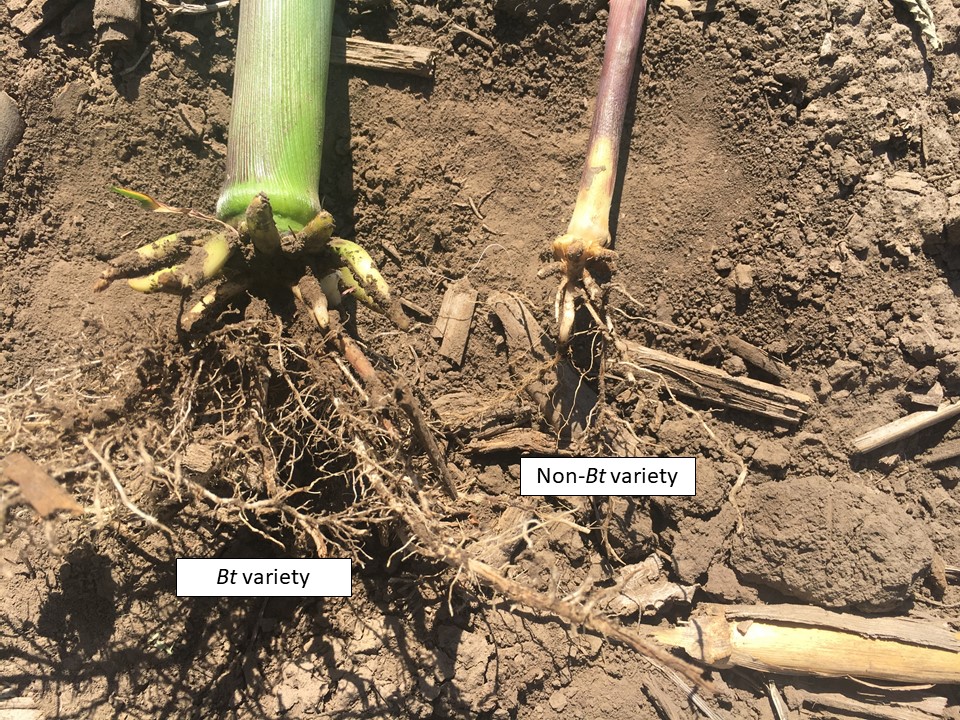–by Dr. Jeff Whitworth and Dr. Holly Davis
As the wheat senesces, it continues to be less and less succulent. Thus, chinch bugs have been, and will continue to, migrate to find a suitable food source. They will utilize any actively growing grasses in the vicinity. The small nymphs cannot fly and thus must crawl to the nearest food source. They are pretty fragile and therefore can’t go very far without finding a food source before they perish.
Most corn planted adjacent to wheat is already large enough to withstand chinch bug feeding. However, seedling sorghum, especially if it is already stressed by the heat and dry conditions, may be overwhelmed and thus killed by this additional stressor. Sampling wheat for chinch bugs now, as it is still senescing, should give an idea about potential chinch bug numbers migrating from wheat. If several samples of different 1 ft2 areas detect an average of 1 chinch bug, some chinch bug management technique should be utilized. For more information on chinch bug biology and management recommendations please see MF3107, Chinch Bugs: https://www.bookstore.ksre.ksu.edu/pubs/mf3107.pdf and/or the 2018 Sorghum Insect Management Guide: https://www.bookstore.ksre.ksu.edu/pubs/mf742.pdf



